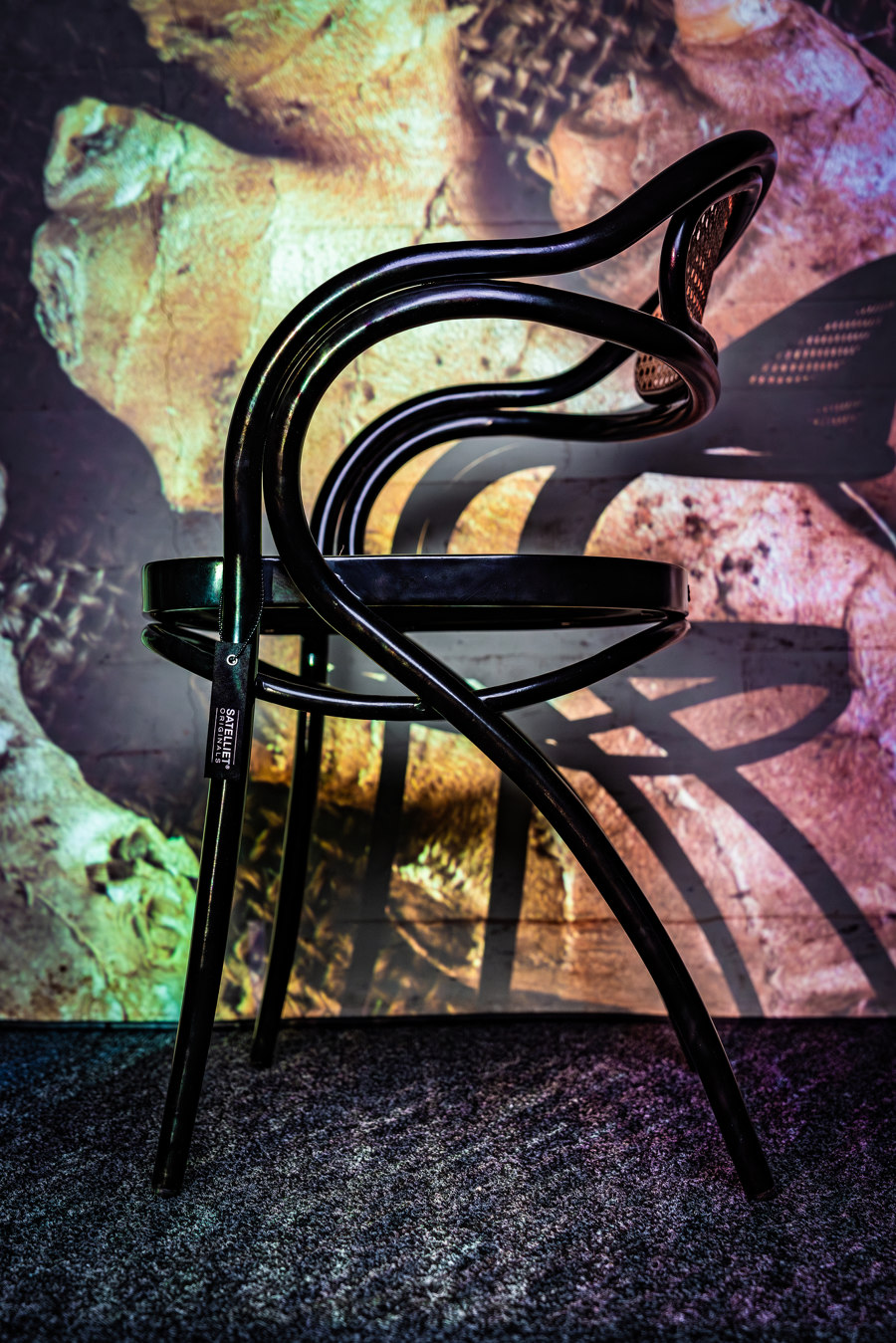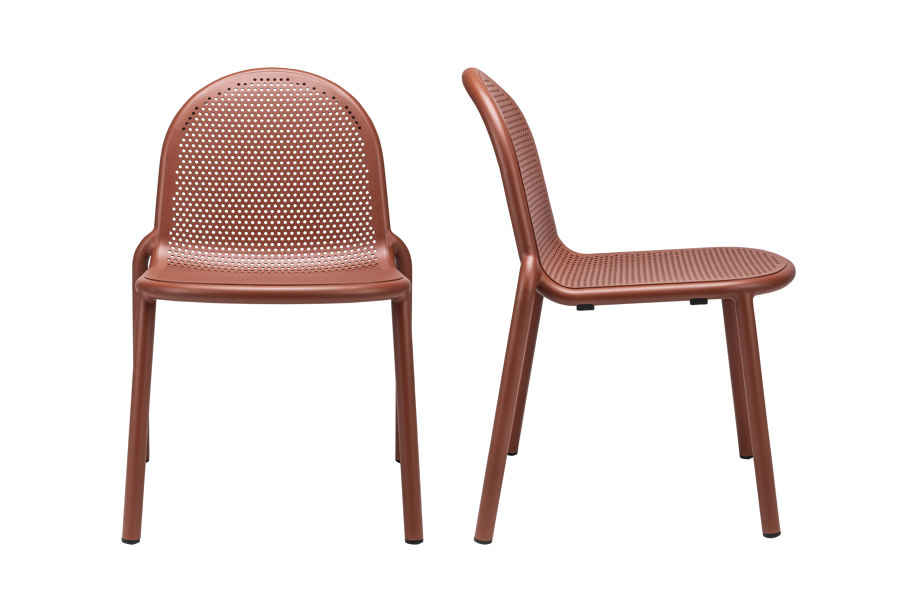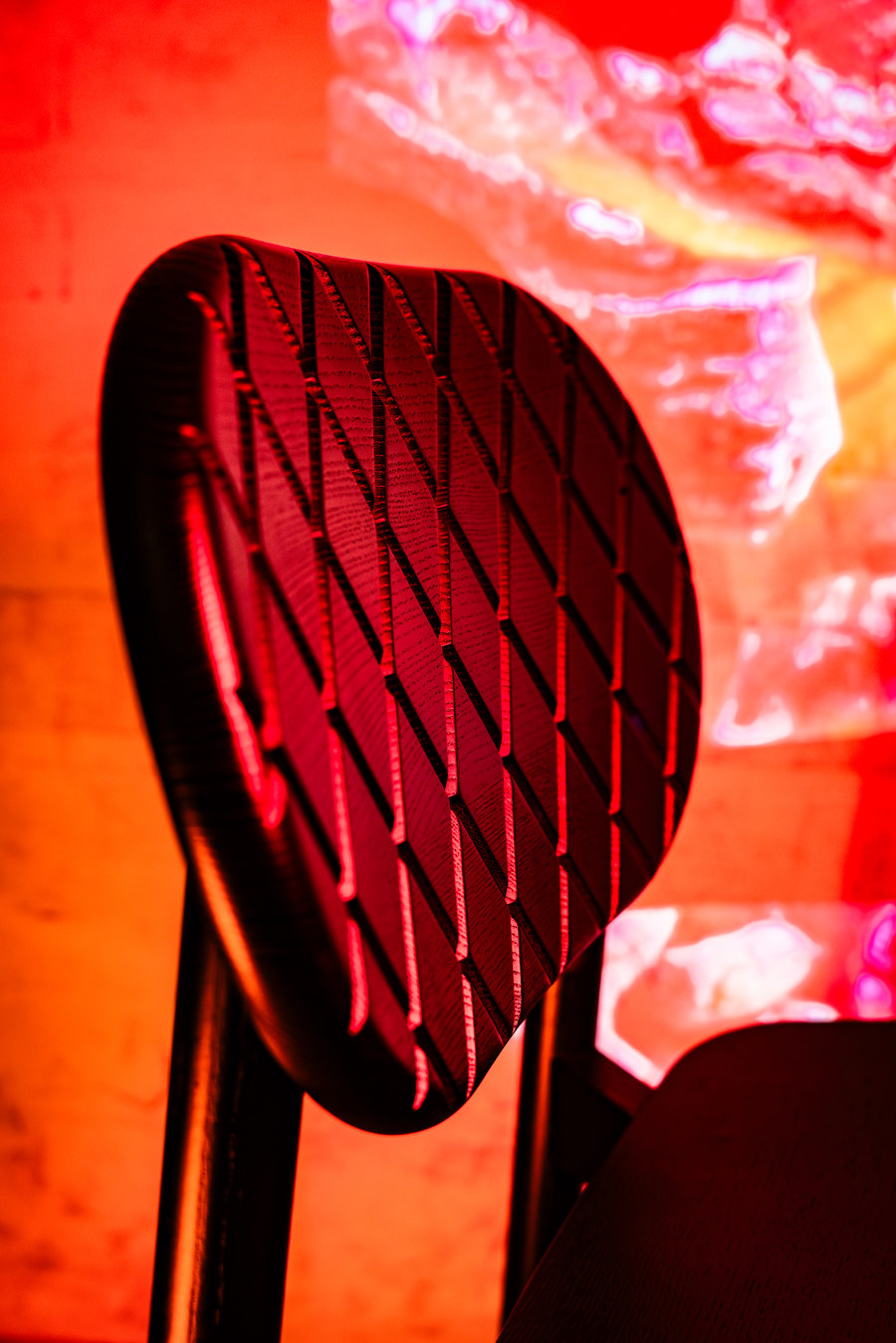Transforming hospitality spaces with originality: Satelliet Originals
Brand story by Tom Howells
Breda, Pays-bas
09.04.24
Satelliet's evolution in hospitality introduces Originals, collaborating with designers to create unique products, expand its portfolio and embrace a sustainable approach.
Satelliet’s extant lines of hospitality furnishings have been purposefully homogenous – not so its offshoot inventory of Dutch-designer-led pieces, dubbed Originals. Photo: Oene Sierksma

Satelliet’s extant lines of hospitality furnishings have been purposefully homogenous – not so its offshoot inventory of Dutch-designer-led pieces, dubbed Originals. Photo: Oene Sierksma
×Satelliet's venture into originality
When it comes to hospitality design, the aesthetic and feel of the spaces in which we eat and drink are almost as important as the things being served. No-one knows that better than Satelliet hospitality furniture – a Dutch company with almost half a century’s experience in creating premium-quality furnishings for a cornucopia of clients.
Its mainstream collections of chairs, stools, benches and tables, while beautifully designed and customisable to each customer, have long tended towards a kind of wilful homogeneity – essential given their application in an endlessly diverse selection of settings.
Jesse Visser’s Arcadia, Elise Luttik’s Chester and Frans Schrofer’s Serpent perfectly exemplify the brand’s MO of elevated, more subtly idiosyncratic pieces than before

Jesse Visser’s Arcadia, Elise Luttik’s Chester and Frans Schrofer’s Serpent perfectly exemplify the brand’s MO of elevated, more subtly idiosyncratic pieces than before
×No longer. Enter Originals: a spin-off brand still focussing on hospitality spaces, but now with an outspoken character and visual USP that’s more idiosyncratically Satelliet. The MO is simple: the brand collaborating with a host of guest designers, giving them the tools to create engaging and inimitable products while widening Satelliet’s range and adding a new layer of boldness to its offering.
The brand is collaborating with guest designers to create unique products, expanding Satelliet's range and adding boldness to its offerings
The label’s credo, explains marketing director Roy Keultjes, is 'Be an Original' – a remit encouraging the designers to harness their creative instincts more playfully than would be possible with Satelliet’s tonally consistent OG ranges: 'Every product in the Satelliet Originals collection is unique. The designers are challenged to create pieces that are aligned with the design principles of Satelliet Originals, cherishing their own signature. Designers can keep their originality. Diversity is a real asset.'
Visser’s Arcadia chairs have a breezy, perforated construction and are available in three muted colourways: terracotta, moss rey and a dusky black. Photo: Oene Sierksma (above)

Visser’s Arcadia chairs have a breezy, perforated construction and are available in three muted colourways: terracotta, moss rey and a dusky black. Photo: Oene Sierksma (above)
×Three dynamic collaborations
The approach is beautifully typified by three new Originals products and the impresarios behind them. First, Jesse Visser, who launched his eponymous studio, Jesse Visser Designprojects, in 2000. His oeuvre is defined by unpredictable furniture and lighting marked by a 'desire to innovate [that] results in striking statement pieces that are as sober as they are poetic'. His new, moulded Arcadia chairs and stool are a textbook example of this. More ascetic than the Art Deco-leaning trademarks of his studio’s work, their forms are imbued with an airy, alfresco lightness by way of a perforated bowl, and a seasonal effervescence afforded by terracotta and moss grey colourways.
The approach is beautifully typified by three new Originals products and the impresarios behind them: Jesse Visser, Elise Luttik and Frans Schrofer
Satelliet came into the orbit of Elise Luttik, meanwhile, at the 2022 edition of Salone del Mobile, where the TU Delft graduate presented a prototype of the Chester chair – a modern reiteration of the timeless Chesterfield. Together, they developed her paradigm into a production ready version, with the classic criss-cross leather patterning translated into tactile ash wood. Available in high, low and upholstered iterations, it’s a canny and striking reimagining of an evergreen style; the melding of functionality and Luttik’s go-to organic, feminine and naturalistic tendencies totally in-tune with the ‘Be an Original’ purview.
Luttik’s Chester is a modern interpolation of the classic, diamond-patterned Chesterfield, here reimagined ash wood. Photo: Oene Sierksma (above)

Luttik’s Chester is a modern interpolation of the classic, diamond-patterned Chesterfield, here reimagined ash wood. Photo: Oene Sierksma (above)
×Finally, there’s the seasoned Frans Schrofer – 'a genuine and experienced furniture designer who is offering concepts on a frequent basis,' says Keultjes. Born into a family of artists and designers, he’s something of a visionary, developing fully-rounded designs that have won awards for their intuitive ergonomics and sinuous shapes, and require minimal prototyping. 'His designs are technically elaborate,' continues Keultjes, 'compared to Jesse and Elise, who are both more conceptual.'
Schrofer‘s Serpent is an attractively undulating take on the classic Thonet-style bistro chair; its rattan seat and backrest given a little Belle Epoque glam by its curved backs and arms. It’s an ‘organic interplay of lines’, says the brand, with a wilfully mysterious character.
The sinuous Serpent is Schrofer’s riff on Thonet’s go-to bistro seating; the recycled HDPE wickerwork of which also typifies Satelliet’s sensitive approach to sustainability. Photo: Paul Jespers (above)

The sinuous Serpent is Schrofer’s riff on Thonet’s go-to bistro seating; the recycled HDPE wickerwork of which also typifies Satelliet’s sensitive approach to sustainability. Photo: Paul Jespers (above)
×Re-cycle, re-value, re-use: embracing the SUM initiative
Notably, it’s also a star turn for Satelliet Originals’ SUM (Still Usable Materials) initiative. By 2030, Satelliet aims to have 75% of its collections made from sustainable and/or recycled materials, a remit that in turn will encourage suppliers and manufacturers to embrace green innovation in products, packaging and transport. To do this, Satelliet Originals adheres to SUM’s three key pillars: ‘Re-cycle’ (via the aluminium frames of pieces like Serpent, plastic wickerwork from HDPE plastic granules and PET felt from recycled materials); Re-value (finding uses for residual materials that would otherwise be wasted); and Re-use (the Originals are designed to be modern classics, to be kept and used for years on end). It’s a holistic, future-facing stance: the brand realising its place in a multitudinous society, adding value to its collaborations and helping to foster a more robust and sustainable future.
Singular products, meaningful creative interplay, the championing of brilliant designers and a truly ethical outlook to tie it all together? That’s Originals – in name and spirit.
© Architonic
Head to the Architonic Magazine for more insights on the latest products, trends and practices in architecture and design.











